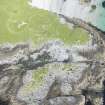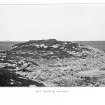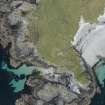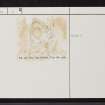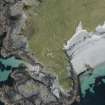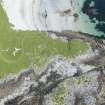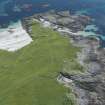Pricing Change
New pricing for orders of material from this site will come into place shortly. Charges for supply of digital images, digitisation on demand, prints and licensing will be altered.
Upcoming Maintenance
Please be advised that this website will undergo scheduled maintenance on the following dates:
Thursday, 9 January: 11:00 AM - 3:00 PM
Thursday, 23 January: 11:00 AM - 3:00 PM
Thursday, 30 January: 11:00 AM - 3:00 PM
During these times, some functionality such as image purchasing may be temporarily unavailable. We apologise for any inconvenience this may cause.
Tiree, Dun Heanish
Broch (Iron Age)(Possible), Dun (Period Unassigned)
Site Name Tiree, Dun Heanish
Classification Broch (Iron Age)(Possible), Dun (Period Unassigned)
Canmore ID 21537
Site Number NM04SW 2
NGR NM 0390 4336
Datum OSGB36 - NGR
Permalink http://canmore.org.uk/site/21537
- Council Argyll And Bute
- Parish Tiree
- Former Region Strathclyde
- Former District Argyll And Bute
- Former County Argyll
NM04SW 2 0390 4336.
(NM 0390 4336) Dun Heanish (NR)
OS 1:10,000 map, (1976)
Dun, Dun Heanish: Standing within outworks on a low promontory which overlooks the shore at the S end of Traigh an Duin, there is a roughly circular dun measuring about 9m in diameter internally. For the most part the dun wall has been reduced to a low stony bank; several outer facing-stones are still visible on the N, but the inner face and the interior are obscured by the remains of indeterminate structures of relatively modern date. There is no indication of the position of the entrance, but it probably lay on the SE.
The outworks comprise two walls, the innermost of which completely enclosed the dun, while the other gave additional protection on the seaward side. The walls have been reduced to low stony mounds with only a few short stretches of outer face surviving in each case. The entrance in the inner wall was probably situated at some point in the wide gap that at present exists on the SE, while a gully on the S affords a natural passage through the outer wall. On the SE, immediately outside the dun wall, there are traces, now too indefinite to plan, of what appears to have been a sub-rectangular building; though later than the dun, it nevertheless may be of some antiquity. When the dun was visited, erosion had exposed a midden between the two outer walls on the SSE, which contained coarse pottery, hammer-stones, pot-boilers, shells and bones (RCAHMS 1980).
Beveridge (E Beveridge 1903) also noted kitchen-midden material and pottery at this site; pottery was also found in 1973 (D MacKinnon 1973), and in 1960, a basin, 10 ins in diameter and 8 ins deep, hollowed in a boulder, found among the debris of the dun, was at the neighbouring croft of Neil MacKinnon.
RCAHMS 1980, visited 1974; E Beveridge 1903; E R Creggeen 1960; D MacKinnon 1973.
A dun and outworks as described. The interior of the dun is disturbed and a hole near the centre has revealed a layer of black earth containing bones and shells. The site has been quarried for material to build the surrounding crofts, and beneath the dun on the W are several scoops, in which was found the stone basin, which lies at NM 0357 4376. Surveyed at 1:2500.
Visited by OS (D W R) 29 June 1972.
Publication Account (2007)
NM04 1 DUN HEANISH
NM/039434
This possible broch or dun on Tiree stands on a low promontory overlooking the shore. Nothing can be seen now but the remains of a roughly circular structure about 9m in diameter internally; only a few feet of the outer facing stones are exposed on the north side. Recent structures obscure the site. One outer wall completely encloses the site and a second protects it on the seaward side; both are now in the form of stony banks with only a few outer facing stones showing.
In 1974 a midden was exposed between the outer walls and yielded some coarse pottery, hammerstones, “pot boilers” (these were presumably heat-cracked stones) bones and shells [3].
Sources: 1. NMRS site no. NM 04 SW 2: 2. Beveridge 1903 87-8: 3. RCAHMS 1980, 109, no. 208 and fig. 126.
E W MacKie 2007
Resistivity (2007)
NM 03903 43345 – NM 03909 43376 – NM 03935 43372
– NM 03925 43345 Dùn Heanish Resistivity survey was conducted over the area occupied by the denuded remains of the Atlantic roundhouse and its outworks. Survey proved the suspected presence of the intramural chamber or gallery in the eastern part of the wall arc, and also in the N and the W. It is not certain whether the results show a continuous gallery interrupted by masonry rubble concentrations or three separate intramural chambers. Survey has also revealed structural anomalies relating to the secondary occupation, both in the interior of the roundhouse and in the outwork.


























